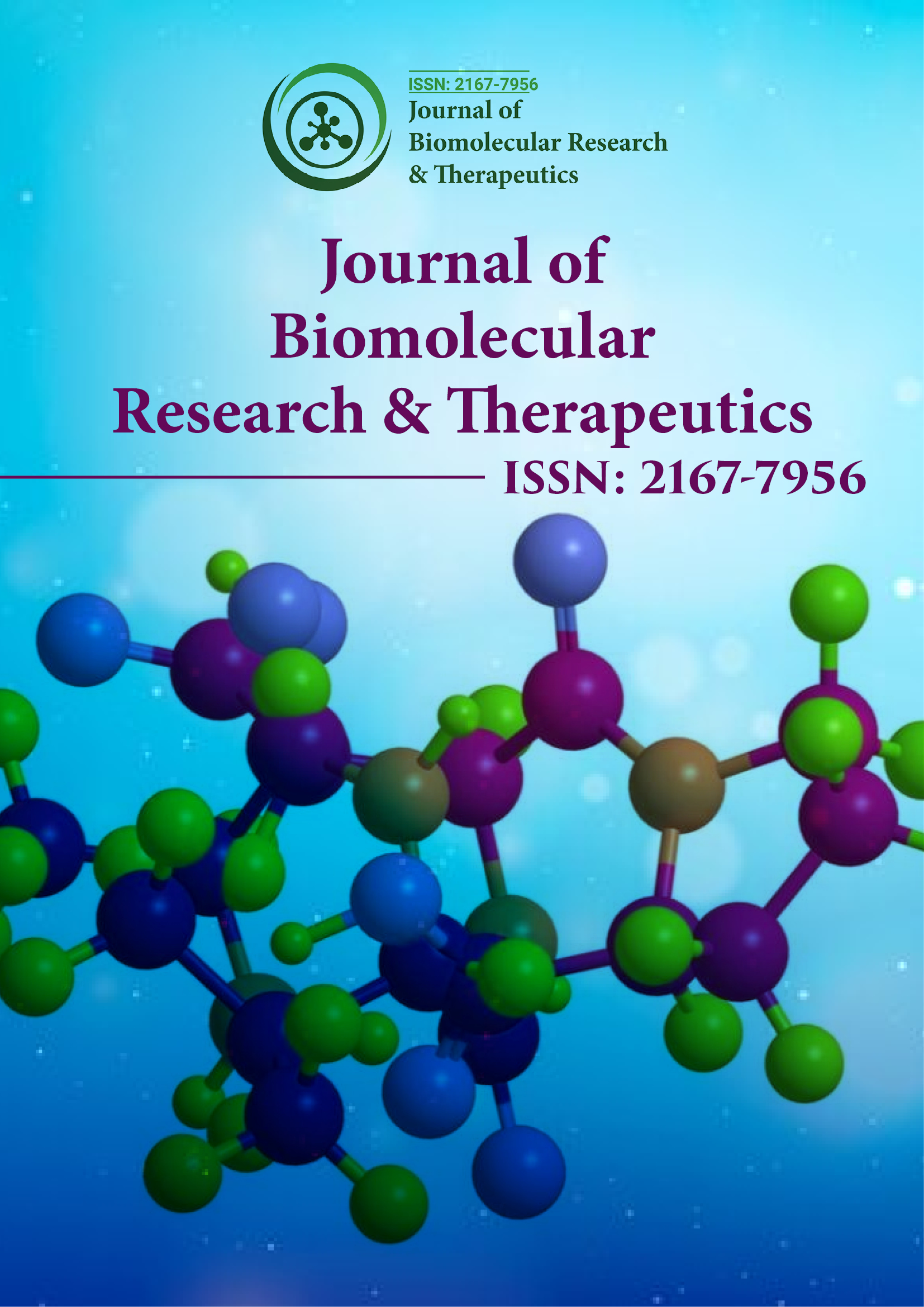Я«ЋЯ»ЂЯ«▒Я«┐Я«»Я«┐Я«ЪЯ«фЯ»ЇЯ«фЯ«ЪЯ»ЇЯ«ЪЯ«цЯ»Ђ
- Я«юЯ»є Я«ЋЯ»ЄЯ«ЪЯ»Ї Я«цЯ«┐Я«▒Я«ЋЯ»ЇЯ«ЋЯ«хЯ»ЂЯ««Я»Ї
- Я«юЯ»єЯ«ЕЯ««Я«┐Я«ЋЯ»ЇЯ«ИЯ»Ї Я«юЯ«░Я»ЇЯ«ЕЯ«▓Я»ЇЯ«џЯ»ђЯ«ЋЯ»Ї
- Я«єЯ«░Я«ЙЯ«»Я»ЇЯ«џЯ»ЇЯ«џЯ«┐ Я«фЯ»ѕЯ«фЯ«┐Я«│Я»Ї
- Я«јЯ«▓Я«ЋЯ»ЇЯ«ЪЯ»ЇЯ«░Я«ЙЯ«ЕЯ«┐Я«ЋЯ»Ї Я«юЯ«░Я»ЇЯ«ЕЯ«▓Я»ЇЯ«ИЯ»Ї Я«▓Я»ѕЯ«фЯ»ЇЯ«░Я«░Я«┐
- RefSeek
- Я«╣Я««Я»ЇЯ«ЪЯ«ЙЯ«░Я»ЇЯ«ЪЯ»Ї Я«фЯ«▓Я»ЇЯ«ЋЯ«▓Я»ѕЯ«ЋЯ»ЇЯ«ЋЯ«┤Я«ЋЯ««Я»Ї
- EBSCO AZ
- OCLC- WorldCat
- SWB Я«єЯ«ЕЯ»ЇЯ«▓Я»ѕЯ«ЕЯ»Ї Я«фЯ«ЪЯ»ЇЯ«ЪЯ«┐Я«»Я«▓Я»Ї
- Я«ЅЯ«»Я«┐Я«░Я«┐Я«»Я«▓Я»Ї Я««Я»єЯ«»Я»ЇЯ«еЯ«┐Я«ЋЯ«░Я»Ї Я«еЯ»ѓЯ«▓Я«ЋЯ««Я»Ї (vifabio)
- Я«фЯ«фЯ»ЇЯ«│Я«ЙЯ«ЕЯ»ЇЯ«ЋЯ«│Я»Ї
- Я«»Я»ѓЯ«░Я»І Я«фЯ«фЯ»Ї
- Я«ЋЯ»ѓЯ«ЋЯ»ЂЯ«│Я»Ї Я«ИЯ»ЇЯ«ЋЯ«ЙЯ«▓Я«░Я»Ї
Я«фЯ«»Я«ЕЯ»ЂЯ«│Я»ЇЯ«│ Я«ЄЯ«БЯ»ѕЯ«фЯ»ЇЯ«фЯ»ЂЯ«ЋЯ«│Я»Ї
- Я«еЯ»ІЯ«ЋЯ»ЇЯ«ЋЯ««Я»Ї Я««Я«▒Я»ЇЯ«▒Я»ЂЯ««Я»Ї Я«еЯ»ІЯ«ЋЯ»ЇЯ«ЋЯ««Я»Ї
- Я«џЯ«Ћ Я««Я«цЯ«┐Я«фЯ»ЇЯ«фЯ«ЙЯ«»Я»ЇЯ«хЯ»Ђ Я«џЯ»єЯ«»Я«▓Я»ЇЯ««Я»ЂЯ«▒Я»ѕ
- Я«ЁЯ«ЪЯ»ЇЯ«ЪЯ«хЯ«БЯ»ѕЯ«фЯ»ЇЯ«фЯ«ЪЯ»ЂЯ«цЯ»ЇЯ«цЯ»ЂЯ«цЯ«▓Я»Ї Я««Я«▒Я»ЇЯ«▒Я»ЂЯ««Я»Ї Я«ЋЯ«ЙЯ«фЯ»ЇЯ«фЯ«ЋЯ«фЯ»ЇЯ«фЯ«ЪЯ»ЂЯ«цЯ»ЇЯ«цЯ»ЂЯ«цЯ«▓Я»Ї
- Я«фЯ»іЯ«░Я»ЂЯ«│Я«ЪЯ«ЋЯ»ЇЯ«ЋЯ««Я»Ї
- Я«ЋЯ»ѕЯ«»Я»єЯ«┤Я»ЂЯ«цЯ»ЇЯ«цЯ»ЂЯ«фЯ»Ї Я«фЯ«┐Я«░Я«цЯ«┐Я«»Я»ѕ Я«џЯ««Я«░Я»ЇЯ«фЯ»ЇЯ«фЯ«┐Я«ЋЯ»ЇЯ«ЋЯ«хЯ»ЂЯ««Я»Ї
- Я«ЅЯ«ЎЯ»ЇЯ«ЋЯ«│Я»Ї Я«ЋЯ«ЙЯ«ЋЯ«┐Я«цЯ«цЯ»ЇЯ«цЯ»ѕЯ«ЋЯ»Ї Я«ЋЯ«БЯ»ЇЯ«ЋЯ«ЙЯ«БЯ«┐Я«ЋЯ»ЇЯ«ЋЯ«хЯ»ЂЯ««Я»Ї
Я«ЄЯ«еЯ»ЇЯ«цЯ«фЯ»Ї Я«фЯ«ЋЯ»ЇЯ«ЋЯ«цЯ»ЇЯ«цЯ»ѕЯ«фЯ»Ї Я«фЯ«ЋЯ«┐Я«░Я«хЯ»ЂЯ««Я»Ї
Я«юЯ«░Я»ЇЯ«ЕЯ«▓Я»Ї Я«ЃЯ«фЯ»ЇЯ«│Я»ѕЯ«»Я«░Я»Ї

Я«ЁЯ«БЯ»ЂЯ«ЋЯ«▓Я»Ї Я«ЄЯ«цЯ«┤Я»ЇЯ«ЋЯ«│Я»ѕЯ«цЯ»Ї Я«цЯ«┐Я«▒Я«ЋЯ»ЇЯ«ЋЯ«хЯ»ЂЯ««Я»Ї
- Я«ЅЯ«БЯ«хЯ»Ђ Я««Я«▒Я»ЇЯ«▒Я»ЂЯ««Я»Ї Я«іЯ«ЪЯ»ЇЯ«ЪЯ«џЯ»ЇЯ«џЯ«цЯ»ЇЯ«цЯ»Ђ
- Я«ЅЯ«»Я«┐Я«░Я»ЇЯ«хЯ»ЄЯ«цЯ«┐Я«»Я«┐Я«»Я«▓Я»Ї
- Я«ЋЯ«ЙЯ«▓Я»ЇЯ«еЯ«ЪЯ»ѕ Я«ЁЯ«▒Я«┐Я«хЯ«┐Я«»Я«▓Я»Ї
- Я«џЯ»ЂЯ«▒Я»ЇЯ«▒Я»ЂЯ«џЯ»ЇЯ«џЯ»ѓЯ«┤Я«▓Я»Ї Я«ЁЯ«▒Я«┐Я«хЯ«┐Я«»Я«▓Я»Ї
- Я«еЯ«░Я««Я»ЇЯ«фЯ«┐Я«»Я«▓Я»Ї & Я«ЅЯ«│Я«хЯ«┐Я«»Я«▓Я»Ї
- Я«еЯ«░Я»ЇЯ«џЯ«┐Я«ЎЯ»Ї & Я«╣Я»єЯ«▓Я»ЇЯ«цЯ»Ї Я«ЋЯ»ЄЯ«░Я»Ї
- Я«еЯ»ІЯ«»Я»єЯ«цЯ«┐Я«░Я»ЇЯ«фЯ»ЇЯ«фЯ»Ђ Я««Я«▒Я»ЇЯ«▒Я»ЂЯ««Я»Ї Я«еЯ»ЂЯ«БЯ»ЇЯ«БЯ»ЂЯ«»Я«┐Я«░Я«┐Я«»Я«▓Я»Ї
- Я«фЯ«»Я»І Я«ЄЯ«ЕЯ»ЇЯ«ЃЯ«фЯ«░Я»ЇЯ««Я»ЄЯ«ЪЯ«┐Я«ЋЯ»ЇЯ«ИЯ»Ї & Я«џЯ«┐Я«ИЯ»ЇЯ«ЪЯ««Я»ЇЯ«ИЯ»Ї Я«фЯ«»Я«ЙЯ«▓Я«юЯ«┐
- Я«фЯ»іЯ«цЯ»Ђ Я«ЁЯ«▒Я«┐Я«хЯ«┐Я«»Я«▓Я»Ї
- Я«фЯ»іЯ«░Я»ЂЯ«│Я»Ї Я«ЁЯ«▒Я«┐Я«хЯ«┐Я«»Я«▓Я»Ї
- Я«фЯ»іЯ«▒Я«┐Я«»Я«┐Я«»Я«▓Я»Ї
- Я««Я«░Я«фЯ«┐Я«»Я«▓Я»Ї & Я««Я»ѓЯ«▓Я«ЋЯ»ЇЯ«ЋЯ»ѓЯ«▒Я»Ђ Я«ЅЯ«»Я«┐Я«░Я«┐Я«»Я«▓Я»Ї
- Я««Я«░Я»ЂЯ«цЯ»ЇЯ«цЯ»ЂЯ«х Я«ЁЯ«▒Я«┐Я«хЯ«┐Я«»Я«▓Я»Ї
- Я««Я«░Я»ЂЯ«цЯ»ЇЯ«цЯ»ЂЯ«х Я«ЁЯ«▒Я«┐Я«хЯ«┐Я«»Я«▓Я»Ї
- Я««Я«░Я»ЂЯ«еЯ»ЇЯ«цЯ»Ђ Я«ЁЯ«▒Я«┐Я«хЯ«┐Я«»Я«▓Я»Ї
- Я«хЯ«БЯ«┐Я«Ћ Я««Я»ЄЯ«▓Я«ЙЯ«БЯ»ЇЯ««Я»ѕ
- Я«хЯ«┐Я«хЯ«џЯ«ЙЯ«»Я««Я»Ї Я««Я«▒Я»ЇЯ«▒Я»ЂЯ««Я»Ї Я««Я»ђЯ«ЕЯ»Ї Я«хЯ«│Я«░Я»ЇЯ«фЯ»ЇЯ«фЯ»Ђ
- Я«хЯ»ЄЯ«цЯ«┐Я«»Я«┐Я«»Я«▓Я»Ї
Я«џЯ»ЂЯ«░Я»ЂЯ«ЋЯ»ЇЯ«ЋЯ««Я»Ї
Я««Я«ЕЯ«џЯ«ЙЯ«ЕЯ»ЇЯ«ЪЯ«┐Я«ЕЯ»Ї Я«Ј Я««Я«▒Я»ЇЯ«▒Я»ЂЯ««Я»Ї Я«фЯ«┐ Я«єЯ«ЋЯ«┐Я«»Я«хЯ»ѕ Я«єЯ«▓Я»ЇЯ«ЋЯ«╣Я«ЙЯ«▓Я»Ї Я«ЁЯ«▓Я»ЇЯ«▓Я«ЙЯ«ц Я«ЋЯ»іЯ«┤Я»ЂЯ«фЯ»ЇЯ«фЯ»Ђ Я«ЋЯ«▓Я»ЇЯ«▓Я»ђЯ«░Я«▓Я»Ї Я«еЯ»ІЯ«»Я»ЇЯ«ЋЯ»ЇЯ«ЋЯ»Ђ Я«џЯ«┐Я«ЋЯ«┐Я«џЯ»ЇЯ«џЯ»ѕЯ«»Я«│Я«┐Я«фЯ»ЇЯ«фЯ«цЯ«▒Я»ЇЯ«ЋЯ«ЙЯ«Е Я«џЯ«ЙЯ«цЯ»ЇЯ«цЯ«┐Я«»Я««Я«ЙЯ«Е Я«џЯ«┐Я«ЋЯ«┐Я«џЯ»ЇЯ«џЯ»ѕ Я««Я»ЂЯ«ЋЯ«хЯ«░Я»ЇЯ«ЋЯ«│Я»Ї
Я«юЯ«ЙЯ«ЕЯ»Ї Я««Я«┐Я«ЕЯ»Ї1, Я«џЯ«┐Я«ЕЯ»Ї-Я«╣Я»ђ Я«╣Я«ЕЯ»Ї², Я«Ј-Я«юЯ«┐Я«ЕЯ»Ї Я«џЯ»ІЯ«»Я»Ї², Я«ЃЯ«фЯ«░Я«┐Я«ЪЯ»ІЯ«ЪЯ«┐Я«ЕЯ»Ї Я««Я«┐Я«░Я»ЇЯ«иЯ«ЙЯ«╣Я«┐, Я«иЯ»ЂЯ«ЕЯ»ЇЯ«▓Я«┐Я«ЕЯ»Ї Я«░Я»єЯ«ЕЯ»Ї¹, Я«юЯ»ЄЯ«џЯ«ЕЯ»Ї Я«ЪЯ«┐. Я«ЋЯ«ЙЯ«ЎЯ»Ї3, Я«фЯ«┐Я«▓Я«┐Я«фЯ»Ї Я«фЯ«┐. Я«╣Я»ѕЯ«▓Я»ЄЯ««Я«ЕЯ»Ї3, Я«╣Я»Є-Я«ЋЯ«┐ Я««Я«┐Я«ЕЯ»Ї¹*, Я«ЁЯ«░Я»ЂЯ«БЯ»Ї Я«юЯ»Є. Я«џЯ«ЕЯ»ЇЯ«»Я«ЙЯ«▓Я»Ї¹*
Я««Я«ЕЯ«џЯ«ЙЯ«ЕЯ»ЇЯ«ЪЯ«┐Я«ЕЯ»Ї (Я«јЯ««Я»ЇЯ«јЯ«ЕЯ»ЇЯ«јЯ«ИЯ»Ї) Я«╣Я»ѕЯ«фЯ»ІЯ«ЋЯ»ЇЯ«ИЯ«┐Я«»Я«Й-Я«цЯ»ѓЯ«БЯ»ЇЯ«ЪЯ«ЋЯ»ЇЯ«ЋЯ»ѓЯ«ЪЯ«┐Я«» Я«ЋЯ«ЙЯ«░Я«БЯ«┐ 1 (Я«јЯ«џЯ»ЇЯ«љЯ«јЯ«ЃЯ«фЯ»Ї-1), Я«ЁЯ«┤Я«▒Я»ЇЯ«џЯ«┐ Я«јЯ«цЯ«┐Я«░Я»ЇЯ«фЯ»ЇЯ«фЯ»Ђ Я««Я«▒Я»ЇЯ«▒Я»ЂЯ««Я»Ї Я«фЯ«┐Я«│Я«ЙЯ«ИЯ»ЇЯ««Я»ІЯ«ЪЯ«┐Я«»Я«▓Я»Ї Я«јЯ«цЯ«┐Я«░Я»ЇЯ«фЯ»ЇЯ«фЯ»Ђ Я«фЯ«БЯ»ЇЯ«фЯ»ЂЯ«ЋЯ«│Я»Ї Я«ЅЯ«│Я»ЇЯ«│Я«┐Я«ЪЯ»ЇЯ«Ъ Я«фЯ«▓Я»ЇЯ«хЯ»ЄЯ«▒Я»Ђ Я«ЅЯ«»Я«┐Я«░Я«┐Я«»Я«▓Я»Ї Я«џЯ»єЯ«»Я«▓Я»ЇЯ«фЯ«ЙЯ«ЪЯ»ЂЯ«ЋЯ«│Я»ѕЯ«ЋЯ»Ї Я«ЋЯ»іЯ«БЯ»ЇЯ«ЪЯ«┐Я«░Я»ЂЯ«фЯ»ЇЯ«фЯ«цЯ«ЙЯ«Ћ Я«ЁЯ«▒Я«┐Я«хЯ«┐Я«ЋЯ»ЇЯ«ЋЯ«фЯ»ЇЯ«фЯ«ЪЯ»ЇЯ«ЪЯ»ЂЯ«│Я»ЇЯ«│Я«цЯ»Ђ. Я«ЋЯ«▓Я»ЇЯ«▓Я»ђЯ«░Я«▓Я»Ї AMPK Я««Я«▒Я»ЇЯ«▒Я»ЂЯ««Я»Ї ERK1/2, gp130/Stat3, Я«хЯ»ђЯ«ЋЯ»ЇЯ«ЋЯ««Я»Ї Я««Я«▒Я»ЇЯ«▒Я»ЂЯ««Я»Ї Я«цЯ«ЕЯ»ЇЯ«ЕЯ«┐Я«»Я«ЋЯ»ЇЯ«Ћ Я«фЯ«ЙЯ«цЯ»ѕЯ«ЋЯ«│Я»ѕ Я«њЯ«┤Я»ЂЯ«ЎЯ»ЇЯ«ЋЯ»ЂЯ«фЯ«ЪЯ»ЂЯ«цЯ»ЇЯ«цЯ»ЂЯ«хЯ«цЯ«ЕЯ»Ї Я««Я»ѓЯ«▓Я««Я»Ї , Я««Я«цЯ»Ђ Я«ЁЯ«▓Я»ЇЯ«▓Я«ЙЯ«ц Я«ЋЯ»іЯ«┤Я»ЂЯ«фЯ»ЇЯ«фЯ»Ђ Я«ЋЯ«▓Я»ЇЯ«▓Я»ђЯ«░Я«▓Я»Ї Я«еЯ»ІЯ«»Я»ЇЯ«ЋЯ»ЇЯ«ЋЯ»Ђ (NAFLD) Я«џЯ«┐Я«ЋЯ«┐Я«џЯ»ЇЯ«џЯ»ѕЯ«»Я«│Я«┐Я«фЯ»ЇЯ«фЯ«цЯ«▒Я»ЇЯ«ЋЯ«ЙЯ«Е Я«њЯ«░Я»Ђ Я«џЯ«┐Я«ЋЯ«┐Я«џЯ»ЇЯ«џЯ»ѕ Я««Я»ЂЯ«ЋЯ«хЯ«░Я«ЙЯ«Ћ MNS Я«џЯ»єЯ«»Я«▓Я»ЇЯ«фЯ«ЪЯ»ЂЯ«ЋЯ«┐Я«▒Я«цЯ«Й Я«јЯ«ЕЯ»ЇЯ«фЯ«цЯ»ѕ Я«ЄЯ«ЎЯ»ЇЯ«ЋЯ»Є Я«еЯ«ЙЯ«ЎЯ»ЇЯ«ЋЯ«│Я»Ї Я«єЯ«░Я«ЙЯ«»Я»ЇЯ«еЯ»ЇЯ«цЯ»ІЯ««Я»Ї . NAFLD Я«еЯ»ІЯ«»Я«ЙЯ«│Я«┐Я«ЋЯ«│Я«┐Я«▓Я»Ї, AMPKα (Thr172) Я«фЯ«ЙЯ«ИЯ»ЇЯ«фЯ»ІЯ«░Я«┐Я«▓Я»ЄЯ«иЯ«ЕЯ»Ї Я«ЁЯ«│Я«хЯ»ЂЯ«ЋЯ«│Я»Ї Я«ЁЯ«ЪЯ«ЋЯ»ЇЯ«ЋЯ«фЯ»ЇЯ«фЯ«ЪЯ»ЇЯ«ЪЯ«Е, Я«ЁЯ«цЯ»ЄЯ«џЯ««Я«»Я««Я»Ї ERK1/2 Я«фЯ«ЙЯ«ИЯ»ЇЯ«фЯ»ІЯ«░Я«┐Я«▓Я»ЄЯ«иЯ«ЕЯ»Ї Я«ЁЯ«│Я«хЯ»ЂЯ«ЋЯ«│Я»Ї Я«ЁЯ«цЯ«┐Я«ЋЯ«░Я«┐Я«ЋЯ»ЇЯ«ЋЯ«фЯ»ЇЯ«фЯ«ЪЯ»ЇЯ«ЪЯ«Е. Я«ЋЯ»ѓЯ«ЪЯ»ЂЯ«цЯ«▓Я«ЙЯ«Ћ, IL-6 Я«еЯ«┐Я«▓Я»ѕЯ«ЋЯ«│Я»Ї ERK1/2 Я«џЯ»єЯ«»Я«▓Я»ЇЯ«фЯ«ЪЯ»ЂЯ«цЯ»ЇЯ«цЯ«▓Я»ЂЯ«ЪЯ«ЕЯ»Ї Я«еЯ»ЄЯ«░Я«ЪЯ«┐Я«»Я«ЙЯ«Ћ Я«цЯ»іЯ«ЪЯ«░Я»ЇЯ«фЯ»ЂЯ«фЯ«ЪЯ»ЂЯ«цЯ»ЇЯ«цЯ«фЯ»ЇЯ«фЯ«ЪЯ»ЇЯ«ЪЯ»Ђ, AMPKα (Thr172) Я«фЯ«ЙЯ«ИЯ»ЇЯ«фЯ»ІЯ«░Я«┐Я«▓Я»ЄЯ«иЯ«ЕЯ«┐Я«▓Я»Ї Я«ЈЯ«▒Я»ЇЯ«фЯ«ЪЯ»ЂЯ««Я»Ї Я«ЋЯ»ЂЯ«▒Я»ѕЯ«хЯ»ЂЯ«ЋЯ«│Я»ЂЯ«ЪЯ«ЕЯ»Ї Я«еЯ»ЄЯ«░Я»ЇЯ««Я«ЙЯ«▒Я«ЙЯ«Ћ Я«цЯ»іЯ«ЪЯ«░Я»ЇЯ«фЯ»ЂЯ«ЪЯ»ѕЯ«»Я«хЯ»ѕ. Я«џЯ»єЯ«▓Я»ЇЯ«▓Я»ЂЯ«▓Я«ЙЯ«░Я»Ї AMP: ATP Я«хЯ«┐Я«ЋЯ«┐Я«цЯ«цЯ»ЇЯ«цЯ»ѕ Я«ЁЯ«цЯ«┐Я«ЋЯ«░Я«┐Я«фЯ»ЇЯ«фЯ«цЯ«ЕЯ»Ї Я««Я»ѓЯ«▓Я««Я»Ї AMPKα Я«ЄЯ«ЕЯ»Ї Я«џЯ»єЯ«»Я«▓Я»ЇЯ«фЯ«ЙЯ«ЪЯ»ЇЯ«ЪЯ»ѕ MNS Я«ЁЯ«цЯ«┐Я«ЋЯ«░Я«┐Я«цЯ»ЇЯ«цЯ«цЯ»Ђ, ERK1/2 Я««Я«▒Я»ЇЯ«▒Я»ЂЯ««Я»Ї PKC-θ Я«фЯ«ЙЯ«ИЯ»ЇЯ«фЯ»ІЯ«░Я«┐Я«▓Я»ЄЯ«иЯ«ЕЯ»Ї Я«ЋЯ»ЂЯ«▒Я»ѕЯ«ЋЯ«┐Я«▒Я«цЯ»Ђ, Я««Я»ЄЯ«▓Я»ЂЯ««Я»Ї Я«фЯ«ЙЯ«▓Я»ЇЯ««Я«┐Я«ЪЯ»ЄЯ«ЪЯ»Ї (PA) Я«ЁЯ«▓Я»ЇЯ«▓Я«цЯ»Ђ IL-6-Я«џЯ«┐Я«ЋЯ«┐Я«џЯ»ЇЯ«џЯ»ѕЯ«»Я«│Я«┐Я«ЋЯ»ЇЯ«ЋЯ«фЯ»ЇЯ«фЯ«ЪЯ»ЇЯ«Ъ Я««Я«ЕЯ«┐Я«ц Я«╣Я»єЯ«фЯ«ЪЯ»ІЯ«џЯ»ѕЯ«ЪЯ»ЇЯ«ЪЯ»ЂЯ«ЋЯ«│Я«┐Я«▓Я»Ї p62 Я««Я«▒Я»ЇЯ«▒Я»ЂЯ««Я»Ї LC3 Я«фЯ»ЂЯ«░Я«ц Я«хЯ»єЯ«│Я«┐Я«фЯ»ЇЯ«фЯ«ЙЯ«ЪЯ»ЇЯ«ЪЯ»ѕЯ«ЋЯ»Ї Я«ЋЯ»ЂЯ«▒Я»ѕЯ«цЯ»ЇЯ«цЯ«цЯ»Ђ. PA Я«ЁЯ«▓Я»ЇЯ«▓Я«цЯ»Ђ IL-6-Я«цЯ»ѓЯ«БЯ»ЇЯ«ЪЯ«фЯ»ЇЯ«фЯ«ЪЯ»ЇЯ«Ъ-Stat3 Я«фЯ«ЙЯ«ИЯ»ЇЯ«фЯ»ІЯ«░Я«┐Я«▓Я»ЄЯ«иЯ«ЕЯ»Ї Я«ЁЯ«│Я«хЯ»ЂЯ«ЋЯ«│Я»Ї MNS-A Я«ЁЯ«▓Я»ЇЯ«▓Я«цЯ»Ђ MNS-B Я«џЯ«┐Я«ЋЯ«┐Я«џЯ»ЇЯ«џЯ»ѕ-Я«╣Я»єЯ«фЯ«ЪЯ»ІЯ«џЯ»ѕЯ«ЪЯ»ЇЯ«ЪЯ»ЂЯ«ЋЯ«│Я«┐Я«▓Я»Ї Я«ЋЯ»ЂЯ«▒Я«┐Я«фЯ»ЇЯ«фЯ«┐Я«ЪЯ«цЯ»ЇЯ«цЯ«ЋЯ»ЇЯ«Ћ Я«ЁЯ«│Я«хЯ«┐Я«▓Я»Ї Я«ЁЯ«ЪЯ«ЋЯ»ЇЯ«ЋЯ«фЯ»ЇЯ«фЯ«ЪЯ»ЇЯ«ЪЯ«Е. 2 Я«хЯ«ЙЯ«░Я«ЎЯ»ЇЯ«ЋЯ«│Я»ЂЯ«ЋЯ»ЇЯ«ЋЯ»Ђ MNS-B Я«ЅЯ«ЪЯ«ЕЯ»Ї Я«џЯ«┐Я«ЋЯ«┐Я«џЯ»ЇЯ«џЯ»ѕЯ«»Я«│Я«┐Я«ЋЯ»ЇЯ«ЋЯ«фЯ»ЇЯ«фЯ«ЪЯ»ЇЯ«Ъ Я«џЯ«ЙЯ«цЯ«ЙЯ«░Я«Б Я«јЯ«▓Я«┐Я«ЋЯ«│Я«┐Я«▓Я»Ї Я«╣Я«┐Я«ИЯ»ЇЯ«ЪЯ«ЙЯ«▓Я«юЯ«┐ Я««Я«▒Я»ЇЯ«▒Я»ЂЯ««Я»Ї Я«ЅЯ«ЪЯ«▓Я»Ї Я«јЯ«ЪЯ»ѕЯ«»Я«┐Я«▓Я»Ї Я«јЯ«еЯ»ЇЯ«ц Я««Я«ЙЯ«▒Я»ЇЯ«▒Я««Я»ЂЯ««Я»Ї Я«ЄЯ«▓Я»ЇЯ«▓Я»ѕ. Я«јЯ«ЕЯ«┐Я«ЕЯ»ЂЯ««Я»Ї. MNS-B Я«ЄЯ«еЯ»ЇЯ«ц Я«јЯ«▓Я«┐Я«ЋЯ«│Я«┐Я«▓Я»Ї Я«ЋЯ«▓Я»ЇЯ«▓Я»ђЯ«░Я«▓Я»Ї AMPK Я«фЯ«ЙЯ«ИЯ»ЇЯ«фЯ»ІЯ«░Я«┐Я«▓Я»ЄЯ«иЯ«ЕЯ»Ї Я««Я«▒Я»ЇЯ«▒Я»ЂЯ««Я»Ї Я«цЯ«ЪЯ»ЂЯ«ЋЯ»ЇЯ«ЋЯ«фЯ»ЇЯ«фЯ«ЪЯ»ЇЯ«Ъ ERK Я«фЯ«ЙЯ«ИЯ»ЇЯ«фЯ»ІЯ«░Я«┐Я«▓Я»ЄЯ«иЯ«ЕЯ»Ї Я«єЯ«ЋЯ«┐Я«»Я«хЯ»ѕ Я«џЯ«ЙЯ«цЯ«ЙЯ«░Я«Б Я«хЯ«┐Я«▓Я«ЎЯ»ЇЯ«ЋЯ»Ђ Я««Я«ЙЯ«цЯ«┐Я«░Я«┐Я«»Я«┐Я«▓Я»Ї Я«єЯ«▒Я»ЇЯ«▒Я«▓Я»Ї Я«фЯ«▒Я»ЇЯ«▒Я«ЙЯ«ЋЯ»ЇЯ«ЋЯ»ЂЯ«▒Я»ѕ Я«еЯ«┐Я«▓Я»ѕЯ«»Я»ѕ Я«ЈЯ«▒Я»ЇЯ«фЯ«ЪЯ»ЂЯ«цЯ»ЇЯ«цЯ«ЋЯ»ЇЯ«ЋЯ»ѓЯ«ЪЯ»ЂЯ««Я»Ї Я«јЯ«ЕЯ»ЇЯ«фЯ«цЯ»ѕЯ«ЋЯ»Ї Я«ЋЯ«ЙЯ«ЪЯ»ЇЯ«ЪЯ»ЂЯ«ЋЯ«┐Я«▒Я«цЯ»Ђ. Я«ЄЯ«еЯ»ЇЯ«ц Я«єЯ«▒Я»ЇЯ«▒Я«▓Я»Ї-Я«ЋЯ»ЂЯ«▒Я»ѕЯ«фЯ«ЙЯ«ЪЯ»ЂЯ«│Я»ЇЯ«│ Я«еЯ«┐Я«▓Я»ѕ Я«ЅЯ«БЯ«хЯ»Ђ-Я«цЯ»ѓЯ«БЯ»ЇЯ«ЪЯ«фЯ»ЇЯ«фЯ«ЪЯ»ЇЯ«Ъ NAFLD Я«љ Я««Я»ЄЯ««Я»ЇЯ«фЯ«ЪЯ»ЂЯ«цЯ»ЇЯ«цЯ»ЂЯ«хЯ«цЯ«┐Я«▓Я»Ї Я««Я»ЂЯ«ЋЯ»ЇЯ«ЋЯ«┐Я«»Я««Я«ЙЯ«ЕЯ«цЯ»Ђ Я«јЯ«ЕЯ»ЇЯ«фЯ«цЯ»ѕ Я«еЯ«┐Я«░Я»ѓЯ«фЯ«┐Я«ЋЯ»ЇЯ«ЋЯ«▓Я«ЙЯ««Я»Ї. Я«ЄЯ«еЯ»ЇЯ«ц Я««Я»ЂЯ«ЪЯ«┐Я«хЯ»ЂЯ«ЋЯ«│Я»Ї MNS-A Я««Я«▒Я»ЇЯ«▒Я»ЂЯ««Я»Ї MNS-B, Я«цЯ«ЙЯ«хЯ«░ Я«ЁЯ«ЪЯ«┐Я«фЯ»ЇЯ«фЯ«ЪЯ»ѕЯ«»Я«┐Я«▓Я«ЙЯ«Е Я«ЋЯ«▓Я«хЯ»ѕЯ«ЋЯ«│Я»Ї, NAFLD Я«ЄЯ«▓Я»Ї Я«ѕЯ«ЪЯ»ЂЯ«фЯ«ЪЯ»ЇЯ«ЪЯ»ЂЯ«│Я»ЇЯ«│ Я«іЯ«ЪЯ»ЇЯ«ЪЯ«џЯ»ЇЯ«џЯ«цЯ»ЇЯ«цЯ»Ђ Я««Я«▒Я»ЇЯ«▒Я»ЂЯ««Я»Ї Я«ЁЯ«┤Я«▒Я»ЇЯ«џЯ«┐ Я«џЯ««Я«┐Я«ЋЯ»ЇЯ«ъЯ»ѕ Я«фЯ«ЙЯ«цЯ»ѕЯ«ЋЯ«│Я»ѕ Я««Я«ЙЯ«▒Я»ЇЯ«▒Я«┐Я«»Я««Я»ѕЯ«ЋЯ»ЇЯ«ЋЯ«┐Я«▒Я«цЯ»Ђ Я««Я«▒Я»ЇЯ«▒Я»ЂЯ««Я»Ї NAFLD Я«ЋЯ»ЇЯ«ЋЯ»Ђ Я«џЯ«┐Я«ЋЯ«┐Я«џЯ»ЇЯ«џЯ»ѕЯ«»Я«│Я«┐Я«фЯ»ЇЯ«фЯ«цЯ«▒Я»ЇЯ«ЋЯ«ЙЯ«Е Я«еЯ««Я»ЇЯ«фЯ«┐Я«ЋЯ»ЇЯ«ЋЯ»ѕЯ«ЋЯ»ЇЯ«ЋЯ»ЂЯ«░Я«┐Я«» Я«џЯ«┐Я«ЋЯ«┐Я«џЯ»ЇЯ«џЯ»ѕ Я««Я»ЂЯ«ЋЯ«хЯ«░Я»ЇЯ«ЋЯ«│Я«ЙЯ«ЋЯ«цЯ»Ї Я«цЯ»ІЯ«ЕЯ»ЇЯ«▒Я»ЂЯ«ЋЯ«┐Я«ЕЯ»ЇЯ«▒Я«Е.